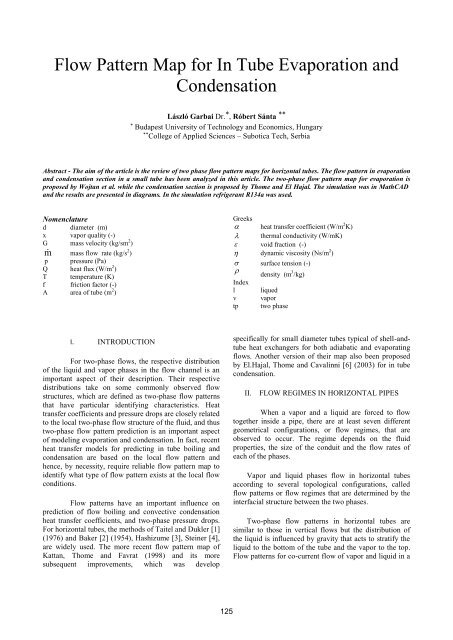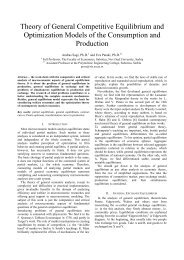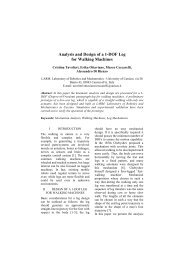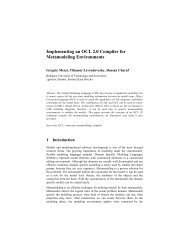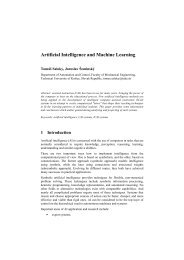Final Program EXPRES 2012 - Conferences
Final Program EXPRES 2012 - Conferences
Final Program EXPRES 2012 - Conferences
- No tags were found...
Create successful ePaper yourself
Turn your PDF publications into a flip-book with our unique Google optimized e-Paper software.
Flow Pattern Map for In Tube Evaporation andCondensationLászló Garbai Dr. * , Róbert Sánta ***Budapest University of Technology and Economics, Hungary** College of Applied Sciences – Subotica Tech, SerbiaAbstract - The aim of the article is the review of two phase flow pattern maps for horizontal tubes. The flow pattern in evaporationand condensation section in a small tube has been analyzed ín this article. The two-phase flow pattern map for evaporation isproposed by Wojtan et al. while the condensation section is proposed by Thome and El Hajal. The simulation was in MathCADand the results are presented in diagrams. In the simulation refrigerant R134a was used.Nomenclatured diameter (m)x vapor quality (-)G mass velocity (kg/sm 2 )m mass flow rate (kg/s 2 )p pressure (Pa)Q heat flux (W/m 2 )T temperature (K)f friction factor (-)A area of tube (m 2 )Greeks heat transfer coefficient (W/m 2 K) thermal conductivity (W/mK) void fraction (-) dynamic viscosity (Ns/m 2 ) surface tension (-)density (m 3 /kg)Indexl liquedv vaportp two phaseI. INTRODUCTIONFor two-phase flows, the respective distributionof the liquid and vapor phases in the flow channel is animportant aspect of their description. Their respectivedistributions take on some commonly observed flowstructures, which are defined as two-phase flow patternsthat have particular identifying characteristics. Heattransfer coefficients and pressure drops are closely relatedto the local two-phase flow structure of the fluid, and thustwo-phase flow pattern prediction is an important aspectof modeling evaporation and condensation. In fact, recentheat transfer models for predicting in tube boiling andcondensation are based on the local flow pattern andhence, by necessity, require reliable flow pattern map toidentify what type of flow pattern exists at the local flowconditions.Flow patterns have an important influence onprediction of flow boiling and convective condensationheat transfer coefficients, and two-phase pressure drops.For horizontal tubes, the methods of Taitel and Dukler [1](1976) and Baker [2] (1954), Hashizume [3], Steiner [4],are widely used. The more recent flow pattern map ofKattan, Thome and Favrat (1998) and its moresubsequent improvements, which was developspecifically for small diameter tubes typical of shell-andtubeheat exchangers for both adiabatic and evaporatingflows. Another version of their map also been proposedby El.Hajal, Thome and Cavalinni [6] (2003) for in tubecondensation.II.FLOW REGIMES IN HORIZONTAL PIPESWhen a vapor and a liquid are forced to flowtogether inside a pipe, there are at least seven differentgeometrical configurations, or flow regimes, that areobserved to occur. The regime depends on the fluidproperties, the size of the conduit and the flow rates ofeach of the phases.Vapor and liquid phases flow in horizontal tubesaccording to several topological configurations, calledflow patterns or flow regimes that are determined by theinterfacial structure between the two phases.Two-phase flow patterns in horizontal tubes aresimilar to those in vertical flows but the distribution ofthe liquid is influenced by gravity that acts to stratify theliquid to the bottom of the tube and the vapor to the top.Flow patterns for co-current flow of vapor and liquid in a125


